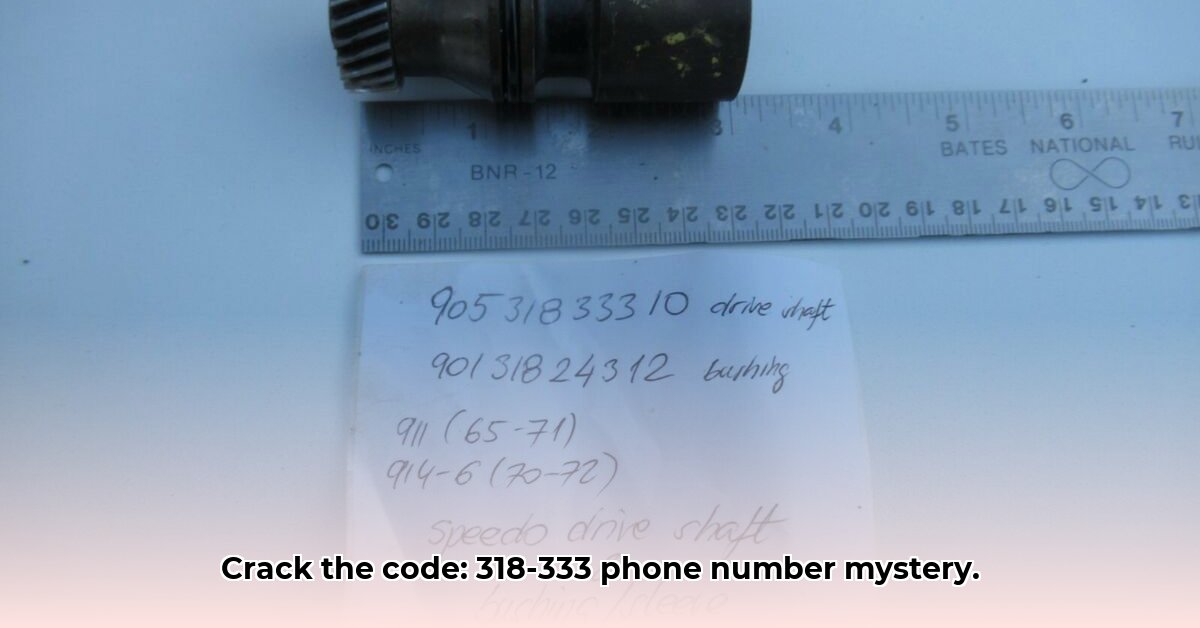
The 318-333 area code, primarily associated with Advanced Wireless Network, presents significant challenges for precise geolocation. While seemingly straightforward, the reality is far more complex, significantly impacting various stakeholders. This article analyzes the limitations of using this area code alone for location identification and explores actionable strategies for mitigating associated risks.
Understanding the Limitations of 318-333 Area Code Data
Locating a mobile phone using only the 318-333 area code is unreliable. Initial searches might suggest Mangham, Louisiana, as the location. However, this is a gross oversimplification. The inherent inaccuracies stem from several factors:
Number Portability (LNP): Individuals can retain their phone number even after switching carriers, making the link between number and physical location tenuous. Someone with a 318-333 number could be anywhere within the service area of the carrier, or even outside it depending on the specific circumstances.
Voice over Internet Protocol (VoIP): VoIP calls use the internet, obscuring the caller's actual physical location. Pinpointing the origin of a VoIP call associated with a 318-333 number requires significantly more sophisticated methods than simply looking up the area code.
Data Inaccuracy: Publicly available phone number databases often contain outdated or incomplete information. These inaccuracies exacerbate the difficulty of precise geolocation, leading to unreliable results.
Diving Deeper: The Impact of Data Limitations
The difficulties in pinpointing locations using only the 318-333 area code create significant challenges across multiple sectors:
Marketing and Sales: Businesses using this data for targeted advertising risk wasted resources by targeting the wrong geographic areas.
Law Enforcement: Locating suspects solely on this area code can prove unproductive, leading to potentially hindering investigations.
Research: Studies relying on such data without acknowledging its limitations may produce flawed conclusions.
Data Aggregators: The inherent inaccuracies affect the usefulness and reliability of the data itself.
Navigating the Risks: A Practical Framework
Relying solely on the 318-333 area code for location identification carries substantial risks. The following risk assessment matrix summarizes the challenges and offers mitigation strategies:
| Factor | Risk Level | Mitigation Strategy |
|---|---|---|
| LNP & VoIP | High | Supplement area code data with other location identifiers (e.g., IP address, cell tower triangulation). |
| Data Accuracy | Medium | Cross-reference information from multiple reputable sources. Verify data independently. |
| Location Approximations | Medium | Acknowledge the inherent uncertainty. Avoid making crucial decisions based solely on area code data. |
Legal and Ethical Considerations
It's imperative to adhere to all applicable legal and ethical guidelines when handling phone number data. Unauthorized tracking is illegal and a violation of privacy. Always prioritize user consent and regulatory compliance, particularly with regulations like GDPR and CCPA.
Beyond the 318-333: Improving Location Accuracy
To improve location tracking, one must move beyond relying solely on the area code. Effective strategies include:
Cell Tower Triangulation: Using signal strength from multiple cell towers can significantly improve location accuracy.
IP Address Analysis: The IP address associated with the phone call can offer a general geographical location, though precision varies.
Wi-Fi Triangulation: Leveraging Wi-Fi network connections can help pinpoint a device's location, particularly indoors.
Open Source Intelligence (OSINT): Combining area code data with publicly available information from social media, online searches, or public records can provide supplementary evidence. This process requires skill and patience and must always respect privacy regulations.
Remember: Even with these techniques, perfect accuracy remains elusive due to the inherent limitations of the data and the constantly evolving technological landscape.
Conclusion: The Importance of Data Awareness
The 318-333 area code presents significant challenges for precise location tracking. Number portability, VoIP technology, and inherent data inaccuracies render area code data alone insufficient for reliable geolocation. Adopting a multi-faceted approach, acknowledging data limitations, and adhering to legal and ethical guidelines are crucial for any effort to locate mobile phones based on this area code. The future of geolocation techniques holds promise, but currently, caution and awareness of the inherent limitations remain critical.